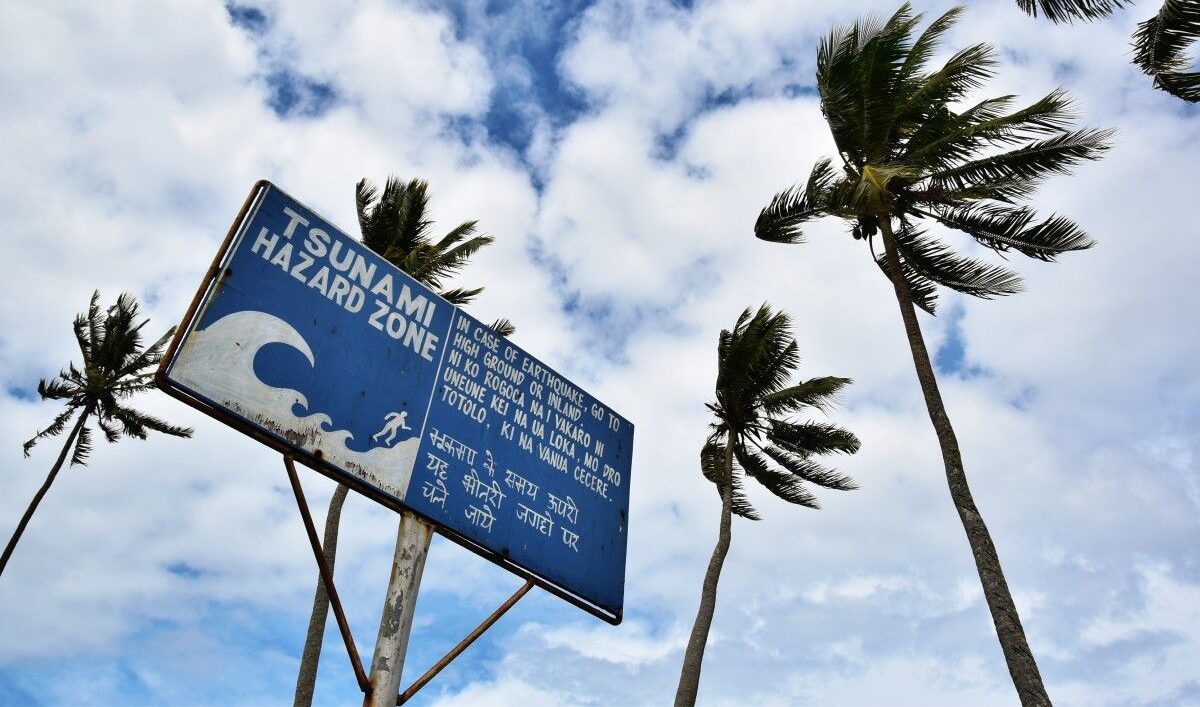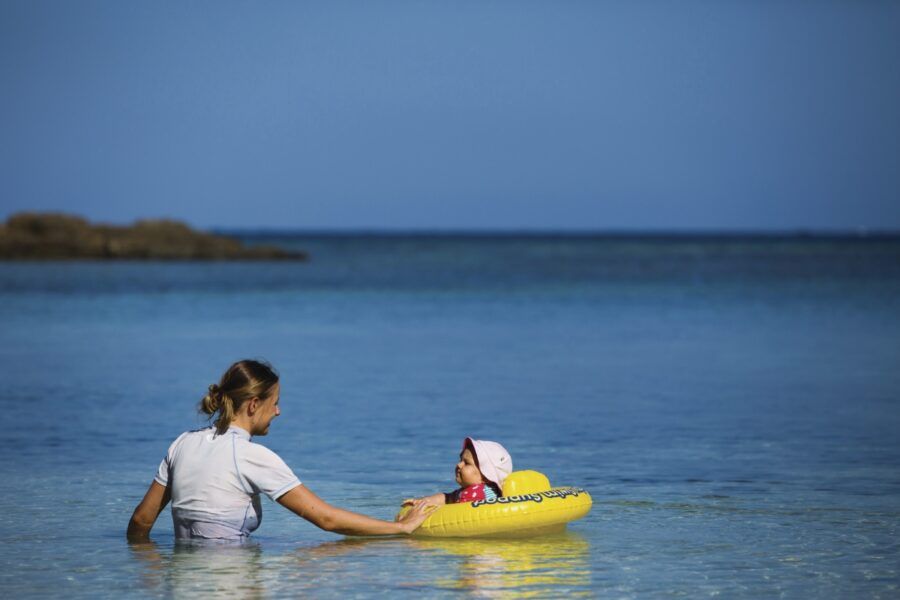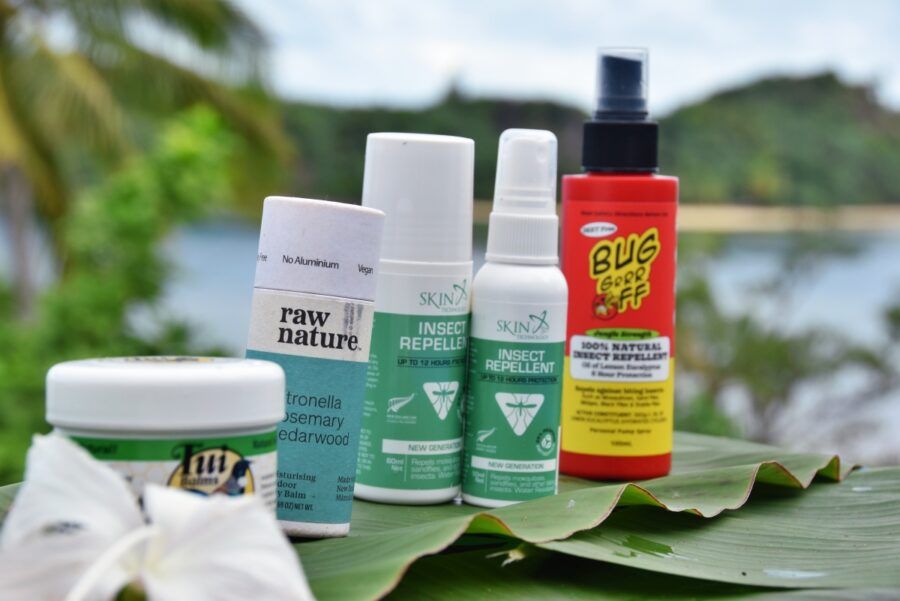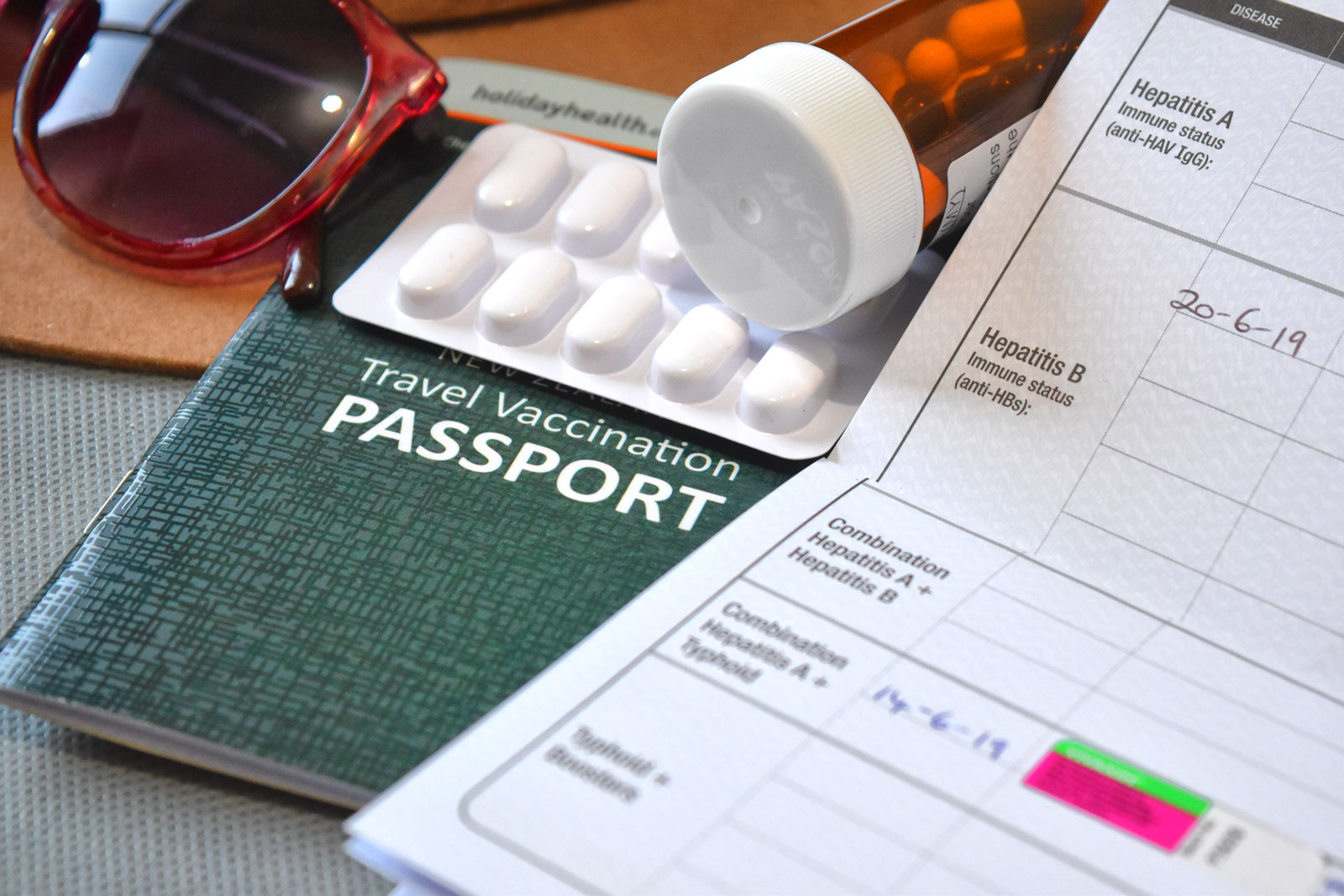A Traveller’s Guide to Earthquakes and Tsunamis in Fiji
Fiji sits on one of the most active regions for earthquakes in the world, the South Pacific Rim. This means that the country is vulnerable to environmental hazards, such as earthquakes, tsunamis and cyclones. Although there has been the famous incident of an earthquake that caused a devastating tsunami in 1953, these events rarely occur so shouldn’t be a deterrent for travellers to explore these beautiful islands. Nevertheless, there are ways you can prepare yourself for natural disasters, which we’ll outline in this guide to earthquakes and tsunamis in Fiji.
For more information on cyclones, see our complete guide, A Guide to Cyclone Safety in Fiji. More safety advice can also be found in our Fiji Safety Tips: Is it Safe to Travel to Fiji?
Table of Contents
5 Facts About Earthquakes and Tsunamis in Fiji
- In 2020 alone, 19 earthquakes with a magnitude greater than 4.0 occurred within 200 km (124 mi) of Fiji.
- Most earthquakes that may affect Fiji actually occur on the ocean floor, making tsunamis more of a potentially dangerous risk.
- The most famous and devastating earthquake and tsunami to affect Fiji occurred on 14 September 1953.
- Fiji is part of the Pacific Ring of Fire, which contributes to Fiji’s occasional earthquakes and its volcanic landscape. However, Fiji’s position is relatively stable compared to that of other Pacific nations.
- Fiji’s location in a seismically active region means it experiences frequent earthquakes, but not all of them have significant impacts due to factors such as depth, distance from populated areas, and the presence of barrier reefs that can mitigate tsunami effects.
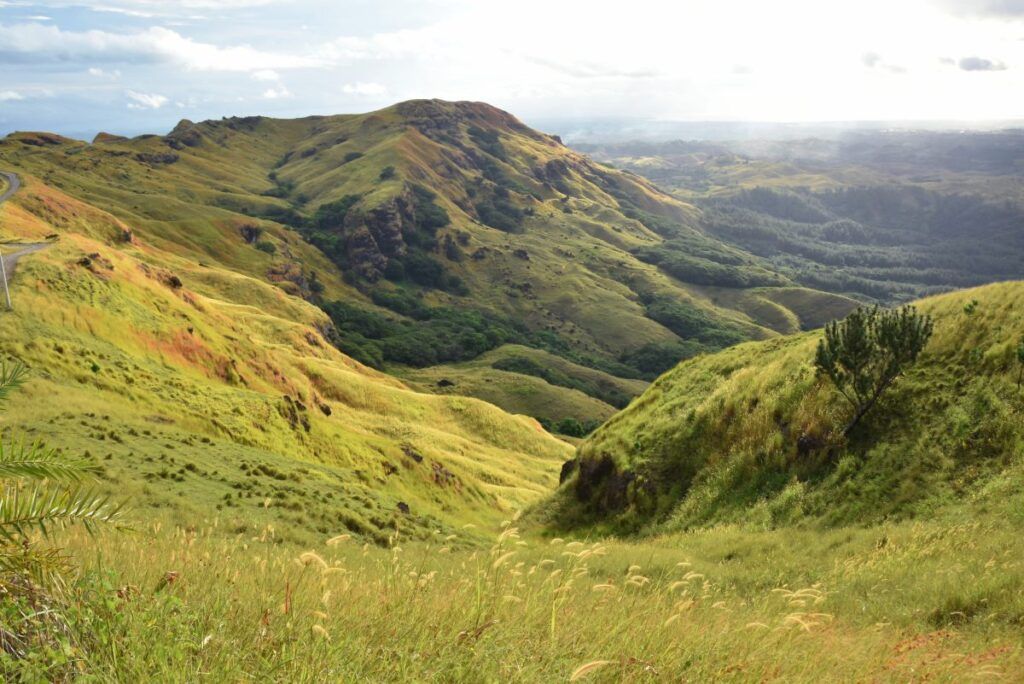 © FijiPocketGuide.com
© FijiPocketGuide.comEarthquakes in Fiji
Situated near the Pacific Rim of Fire, Fiji is prone to seismic activity. The island nation lies in a diffuse plate boundary zone between the Pacific and Australian tectonic plates, experiencing regular low-magnitude tremors and occasional larger quakes. In 2020 alone, 19 earthquakes with a magnitude greater than 4.0 occurred within 200 km (124 mi) of Fiji.
The upper crust of southeast Viti Levu, Fiji’s main island, is dissected by a complex network of interlocking faults. This intricate fault mesh is believed to accommodate regional tectonic deformation in a distributed manner. (You can learn more about this fascinating geological feature in the Thesis: Neotectonics, Seismic and Tsunami Hazards, Viti Levu, Fiji.)
Significant Seismic Events in Fiji
Throughout its recorded history, Fiji has experienced several earthquakes that have left a lasting impact. The most notable of these include:
1. The 1953 Suva Earthquake: Considered the most destructive in Fiji’s history, this magnitude 6.8 Ms (surface wave magnitude) or 6.4 Mw (moment magnitude) quake struck on 14 September 1953. It claimed eight lives, seriously injured 20 others, and caused significant damage to the capital city.
2. The 2018 Fiji Earthquake: One of the largest recorded earthquakes in the region, this magnitude 7.9 event occurred on 6 September 2018. Despite its impressive magnitude, the quake’s unusually deep focal point of 670 km limited its surface impact.
3. The 1919 Fiji Earthquake: This magnitude 7.8 earthquake struck on 1 January 1919 at a depth of 485 km.
4. The 2002 Fiji Earthquake: On 19 August 2002, a magnitude 7.7 earthquake occurred at a depth of 580 km.
Several other significant earthquakes with magnitudes ranging from 6.9 to 7.4 have occurred in the Fiji region over the years, including events in 1996, 1957, 2011, 1991, and 1963. While these earthquakes were considerable in terms of magnitude, their deep focal depths (often exceeding 500 km (311 mi)) may have limited their surface impacts.
It’s important to note that Fiji’s location in a seismically active region means it experiences frequent earthquakes, but not all of them have significant impacts due to factors such as depth, distance from populated areas, and the presence of barrier reefs that can mitigate tsunami effects.
What to Do if You Experience an Earthquake in Fiji
There is no way to predict earthquakes, so any actions you take for your own safety have to occur while the earthquake is happening. Measures you can take include:
- If you are in a building, seek shelter under a table, bench or bed. You can also stand under the doorframe, which is one of the strongest foundations in a building.
- Stay away from windows, mirrors, cupboards and shelves.
- Stay out of elevators and stairways.
- If you are outside, move away from power lines, trees, buildings and anything else that could fall on you.
For more general safety advice, see Fiji Safety Tips: Is Fiji Safe for Tourists?
Tsunami Events
Most earthquakes occur on the ocean floor within close distance to the islands, often making tsunamis more of an issue for Fiji than earthquakes themselves. We dive more into those details in the section below.
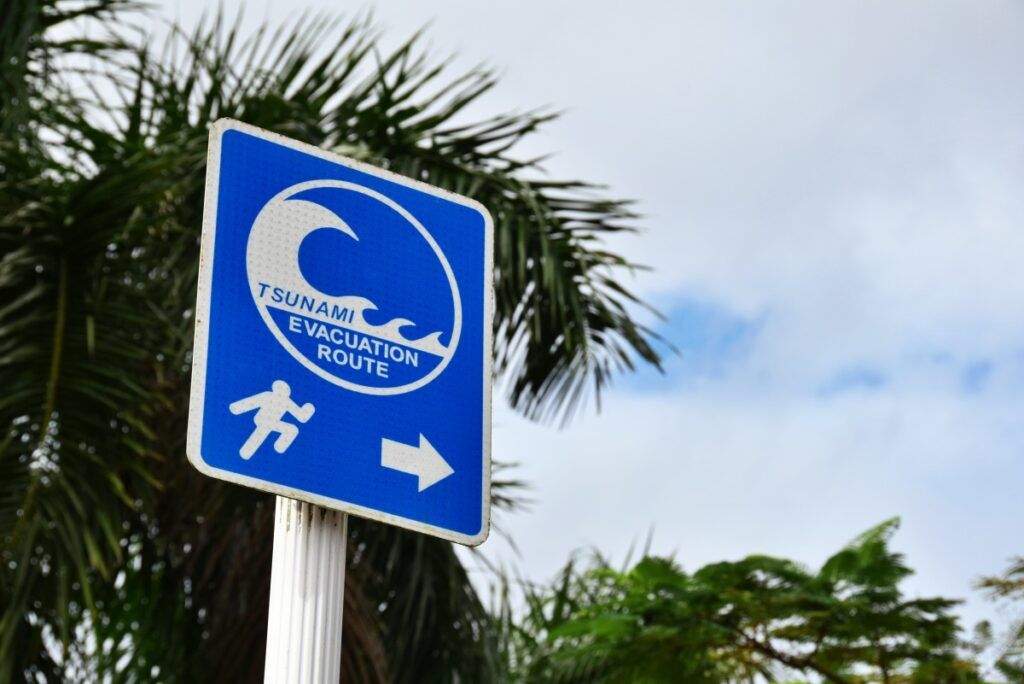 © FijiPocketGuide.com
© FijiPocketGuide.comTsunamis in Fiji
Tsunamis are the largest danger of earthquakes in Fiji, but can also be caused by landslides, volcanic eruptions and anything else that rapidly displaces a large volume of water.
Since 1865, there have been 11 tsunamis recorded in Fiji. One of the most impactful occurred in September 1953 with waves reportedly up to 5 m (16 ft) high and five recorded deaths. This is considered the most damaging local tsunami to affect Fiji in recorded history. It occurred following a magnitude 6.8 earthquake near Suva.
Additionally, a recent event in May 2023, when a magnitude 7.7 earthquake near the Loyalty Islands caused small tsunamis in the southwest Pacific, including strong currents and surges affecting New Zealand.
How to Prepare for a Tsunami in Fiji
A little bit of warning is usually given when a tsunami is about to hit land, but tsunamis happen fast and require fast action. There are a few ways you can prepare for a tsunami in Fiji, which include:
- Being aware of tsunami evacuation maps for where you’re staying.
- Listening out for tsunami warnings emitted through loudspeakers and sirens, through radio, TV, online on news websites and on the Fiji Meteorological Service website.
- Download some tsunami warning apps or text messaging services, such as SMS-Tsunami-Warning.com and the Nadraki App.
What to Do if a Tsunami Warning is Issued
Tsunami warnings can be issued through news media in the South Pacific. Other signs of a tsunami could be a strong earthquake, seeing the ocean recede and/or hearing unusual roaring sounds from the ocean. If any of these signs occur, follow the steps:
- If you see signs of a tsunami before a tsunami warning is issued, act immediately.
- If you’re on the coast, move inland and to higher ground immediately.
- Head to areas as advised on tsunami evacuation maps and or follow tsunami evacuation signage, if available.
After a tsunami, continue listening to the media for announcements. Only move back into the affected areas when authorities have said it is safe to do so.
 © FijiPocketGuide.com
© FijiPocketGuide.comFrequently Asked Questions About Earthquakes, Tsunamis and Natural Disasters in Fiji
What are the most asked questions about earthquakes, tsunamis and natural disasters in Fiji? If you have questions about cyclones, head to Cyclones in Fiji: A Guide to Cyclone Safety in Fiji. Otherwise, here are some questions answered.
Are earthquakes common in Fiji?
While Fiji experiences earthquakes relatively frequently, most are small and go unnoticed. The country sits on the Pacific Ring of Fire, making it prone to seismic activity. However, large, damaging earthquakes are rare. Fiji’s building codes and infrastructure are designed with earthquake resistance in mind.
What was the worst earthquake in Fiji?
The most significant earthquake in Fiji’s recorded history occurred on September 16, 1953. It measured 6.8 on the Richter scale and caused extensive damage in Suva, the capital city. Fortunately, there were no fatalities, but the event led to improvements in building standards and disaster preparedness. For more information, check out our article on Fiji’s history.
Is Fiji on a fault line?
Yes, Fiji is located near several fault lines in the Pacific Ocean. The country sits on the boundary between the Pacific Plate and the Indo-Australian Plate, which is part of the Pacific Ring of Fire. This geological position contributes to Fiji’s seismic activity and volcanic origins. For more information, check out our guide to Fiji’s geography.
Is Fiji prone to tsunamis?
Fiji has some risk of tsunamis due to its location in the Pacific Ocean and proximity to seismically active areas. While tsunamis are not frequent, the country has experienced them in the past and maintains tsunami warning systems and evacuation procedures. Coastal areas are most at risk. For more information, check out our safety guide for Fiji.
Is Fiji on the Ring of Fire?
Yes, Fiji is part of the Pacific Ring of Fire. This horseshoe-shaped zone is known for its high seismic and volcanic activity. Being on the Ring of Fire contributes to Fiji’s occasional earthquakes and its volcanic landscape. However, Fiji’s position is relatively stable compared to some other Pacific nations.
What is the biggest natural disaster in Fiji?
Cyclones are generally considered the most significant natural disasters in Fiji. Tropical Cyclone Winston in 2016 was particularly devastating, being the strongest tropical cyclone to make landfall in the South Pacific Basin in recorded history. It caused widespread damage and loss of life. Earthquakes and tsunamis, while potential threats, have historically been less impactful. For more information, check out our guide to weather in Fiji.
Is Fiji near a tectonic plate?
Fiji is located near the boundary of two major tectonic plates: the Pacific Plate and the Indo-Australian Plate. This proximity to plate boundaries contributes to the country’s seismic activity and volcanic origins. However, Fiji’s position is relatively stable compared to some other Pacific nations directly on plate boundaries.
More About Earthquakes and Tsunamis in Fiji
That’s it for our guide to earthquakes and tsunamis in Fiji. For more about natural disasters and safety tips, head to the following articles:
- Cyclones in Fiji: A Guide to Cyclone Safety in Fiji
- Fiji Safety Tips: Is it Safe to Travel to Fiji?
- Is the Water Safe to Drink in Fiji?
For more tips for travelling in Fiji, head to our 30 Tips for Travelling in Fiji.
Sources:
The information in this guide has been compiled from our extensive research, travel and experiences across Fiji and the South Pacific, accumulated over more than a decade of numerous visits to each destination. Additional sources for this guide include the following:
- Tourism Fiji (General travel advice - Updated [2025])
- Fiji Immigration (Visa and immigration advice - Updated [2025])
- Fiji Revenue & Customs Service (Customs and visitor taxes - Updated [2025])
- Biosecurity Authority of Fiji (Biosecurity advice - Updated [2025])
- Fiji Meteorological Service (Weather forecast and warnings - Updated [2025])
- Fiji Bureau of Statistics (Statistics and travel data - Updated [2025])
- Ministry of Tourism and Civil Aviation (Tourism statistics - Updated [2025])
- Land Transport Authority (Road safety advice - Updated [2025])
- Safe Travel (New Zealand travel advisory for Fiji - Updated [2025])
- Smart Traveller (Australia travel advisory for Fiji - Updated [2025])
- Travel.State.Gov (U.S. travel advisory for Fiji - Updated [2025])
- SPTO (Pacific tourism advice - Updated [2025])
- Fiji Hotel and Tourism Association (Tourism trade association - Updated [2025])
Our editorial standards: At Fiji Pocket Guide, we uphold strict editorial standards to ensure accurate and quality content.

About The Author
Robin (Ruveni) C.
This article was reviewed and published by Robin, the co-founder of Fiji Pocket Guide. He has lived, worked and travelled across 16 different countries before settling in the South Pacific, so he knows a thing or two about planning the perfect trip in this corner of the world. Robin is also the co-founder of several other South Pacific travel guides and is a regular host of webinars with the South Pacific Tourism Organisation.

